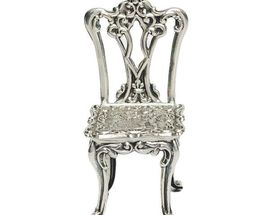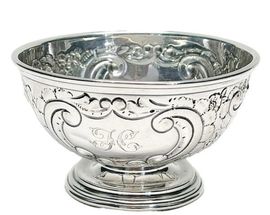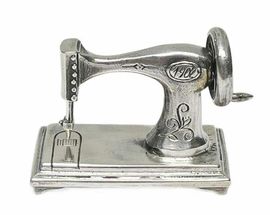According to Terry, Silver miniature toys have been made for decades mainly in Britain and Holland. The desire by the wealthy to compete and adorn their doll's houses with as many unique silver miniatures started in the 17th-century (when doll's houses were made fashionable in Germany), and continued into the 19th-century.
The doll's houses would be furnished with miniature copies of silver furniture and fittings. In an age where women's roles were mostly limited to the domestic front, they were instructional – intended to show young girls how a home should be set out and how the interior of a house should look. Many times, the furniture was done as an exact copy of the furniture in their own home.
"It is easy to be taken in by the opulence and grandeur of the larger items, but if you have the chance to stop and look at some of these miniatures you will be astonished by the details and finesse of the craftsmanship." – Clyde Terry
The novelty trend of collecting furniture and objects in the finest silver for the doll's house caught on, and exact replicas were made of what would be in an 18th-century Dutch or English home. Although called toys, these items were not made to be played with – actual toys were much larger and easier to handle.
Today, finding those larger toys is extremely rare, as they were played with and many got damaged or destroyed as time went by.
Terry points out that it became quite a status symbol for "the lady of the house" to have the finest of items in the doll's house, and this created a huge demand at the time for silversmiths to create different items all the time. Collecting silver toys and miniatures has grown enormously worldwide, particularly as these collections do not take up a huge amount of space and can be easily displayed.
To recognise authenticity, silver items are normally hallmarked with the maker's name and the country of origin. Look out for these small items at antique fairs and shops, he says. "It is easy to be taken in by the opulence and grandeur of the larger items, but if you have the chance to stop and look at some of these miniatures you will be astonished by the details and finesse of the craftsmanship."
Clyde Terry is the owner of Clyde on 4th Antiques and Collectables in Melville.







Comments